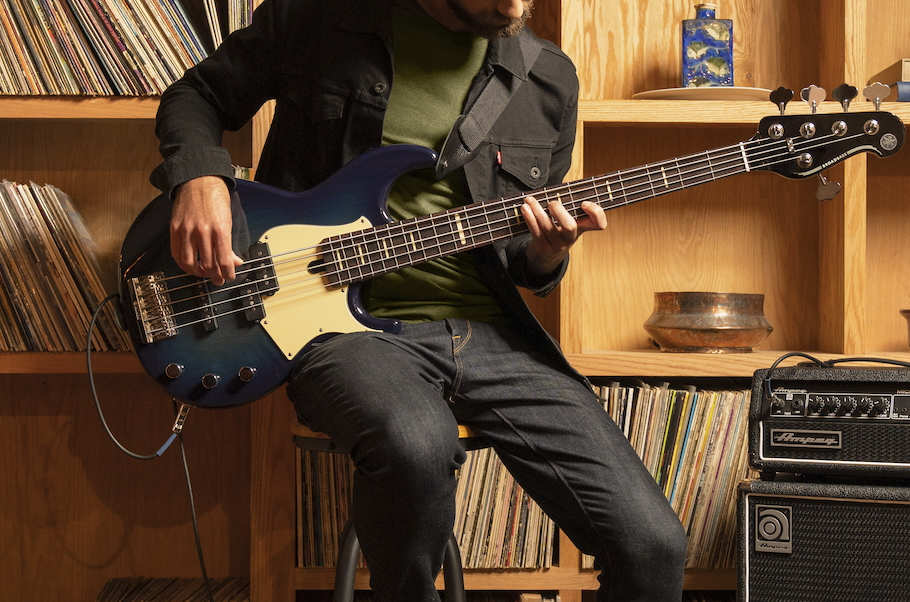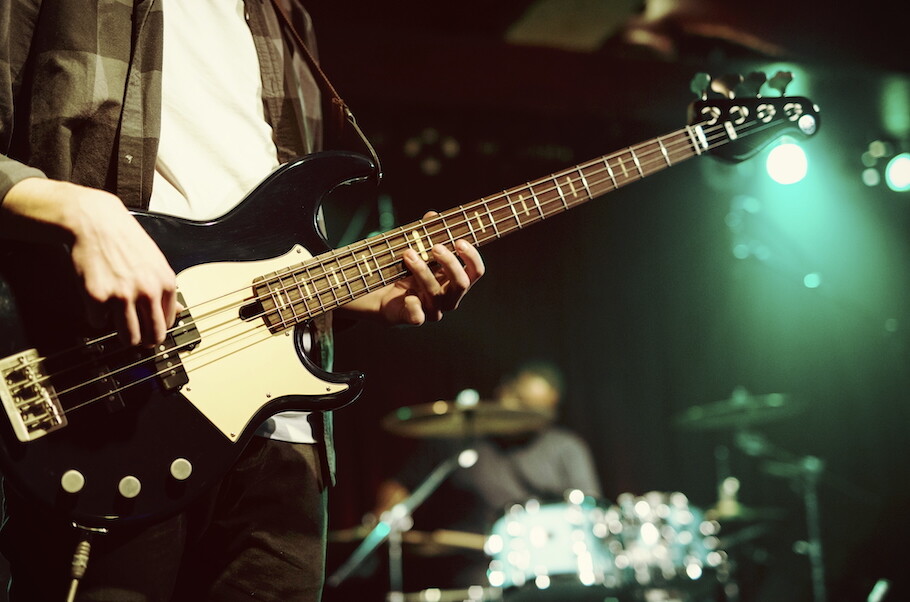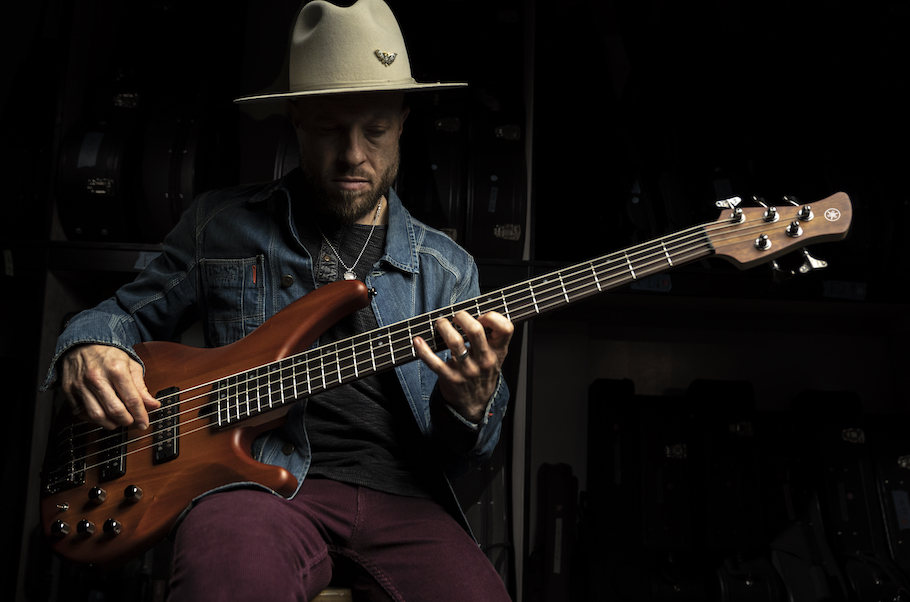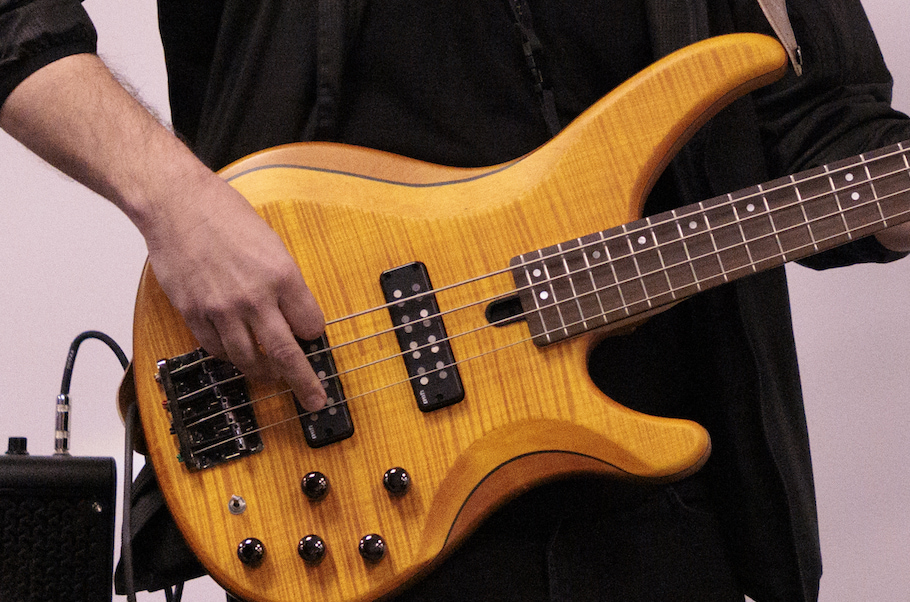Play Bass Faster and Better: Exercises for the Fretting Hand
Get your fingers in shape.
The idea of bolstering one’s fingers to play a musical instrument faster or better is nothing new. Back in 1830, a young German musician, Robert Schumann, invented a device to help him strengthen the index and middle fingers on his right hand. Instead of becoming a better pianist, however, he lost sensation in both fingers, which killed his chances of being a concert pianist. Today, Schumann is renowned as one of classical music’s greatest composers.
Fortunately, there are finger-to-finger exercises that can take your playing to the next level without ruining your hands. Done properly, the four routines described below will wake up your fingers, help you consistently get clean, accurate tone, and give you the finger independence to execute tricky passages on the fly — a crucial skill for any working bass player.
THE TABLETOP
Let’s start with an exercise that doesn’t even require you to play bass. The premise is simple: Curl your hand on a flat surface, palm down, and lift each finger one by one. Sounds simple, right? Notice which fingers are harder to lift than others, and feel the burn when you lift two fingers at a time. Here’s what it looks like.
THE TONY
Like the next two exercises, this set of stretches from prominent New York bassist Tony Conniff requires you to use one finger per fret. Here, you simply play each of the patterns shown below on every string of your bass. (For all patterns, 1 = index finger, 2 = middle finger, 3 = ring finger and 4 = pinky.) If you’re on a 5-string, you might start by playing the first pattern on your G string before working your way down, one string at a time, to the B. Then start the next pattern on the B string and work your way back up to the G.
| Pattern 1 | Pattern 2 | Pattern 3 |
| 1 2 3 4 1 2 3 4 | 1 2 3 2 3 4 3 4 | 1 3 4 2 3 4 3 2 |
| 4 3 2 1 4 3 2 1 | 1 4 2 4 3 4 2 4 | 1 4 1 2 2 1 4 1 |
| 1 4 3 4 3 4 3 4 | 1 4 1 3 3 1 4 1 | 2 4 2 3 3 2 4 2 |
Here’s what Pattern 1 sounds like, played fingerstyle on a Yamaha BB435 five-string bass:
Here’s what Pattern 2 sounds like, played with my thumb while muting with my right hand:
And here’s what Pattern 3 sounds like, played with a pick:
As you work through these, ensure that each note sounds cleanly and do your best to only lift the finger you’re ready to use; the other fingers should be down and in position, ready to fret. Although this exercise can be played anywhere on the fretboard, it has a special impact in the first position (frets 1 through 4), which is also the biggest stretch. Take your time and stop if you feel any pain.
THE HUMBLER
This drill, a variation on the Tony, is tougher than it looks. Start on your E, A or D strings (or your B string if you’re playing a five-string bass), play four notes in succession, and hold each finger down. Now lift just your first finger and use it to play the note a fourth up (same fret, next highest string) — but hold the other three fingers down. Don’t let go of a finger until you need it to fret the next note. Here’s what it looks like.
THE SPIDER
This stretch has been a practice room and backstage warmup staple ever since Yamaha Artist John Patitucci mentioned it in his 1991 instructional video Electric Bass. At the fifth fret, play G with your index finger on the D string, then play the fifth (D, two frets over, one string up) on the G string with your ring finger. Move up a half-step and repeat this reach to the fifth using your middle finger (A♭ on the D string) and pinky (E♭ on the G string).
With your hand still in position, play A on the D string with your middle finger, and use your index finger to play the C on the G string, an interval of a minor third. Finish by using your pinky to play the B♭ and your middle finger to play the D♭ at the sixth fret of the G.
Feel free to try the Spider on any set of adjacent strings; using numbers assigned to your fretting-hand fingers, it would look like this on the D and G strings:
1 (D string), 3 (G string)
2 (D string), 4 (G string)
3 (D string), 1 (G string)
4 (D string), 2 (G string)
As you play through this, strive for consistency and give each note its full due. Need something more challenging? Start on a lower string and play octaves instead of fifths and minor sixths instead of minor thirds, as this bass player does.
NO PAIN, NO PAIN
As with all warmups and stretches, it’s important to stay relaxed. Start slowly and work your way up with a metronome. Keep your fretting-hand forearm relaxed. A little stress is OK, but if you feel even a hint of pain, stop and rest a minute before continuing.
Consider these exercises a starting point. Customize them for your hands and your bass. Make these workouts your own, and your fingers will love you for it!















